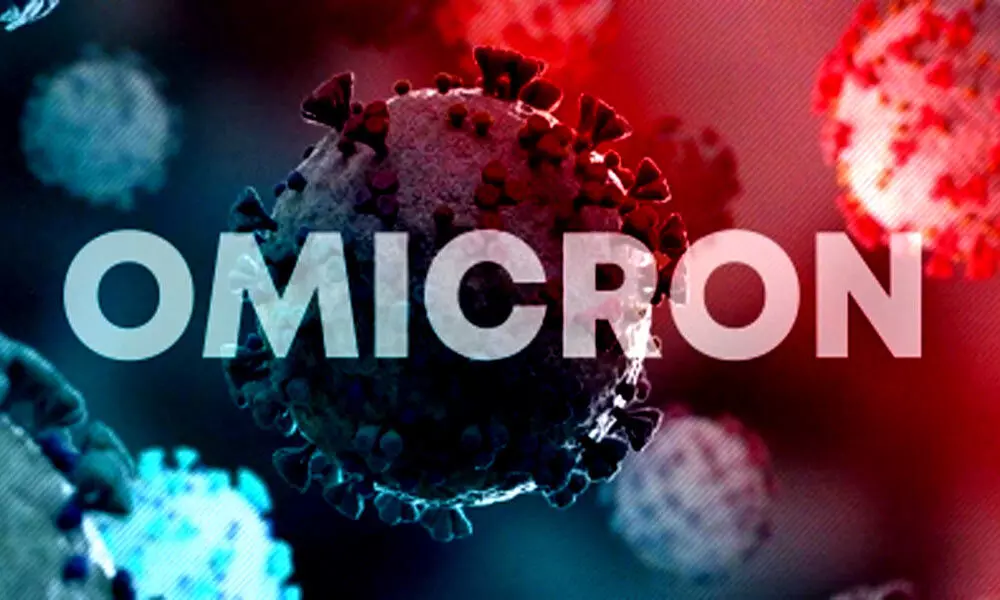Live
- Shreyas Iyer to lead Mumbai as Prithvi Shaw returns for Syed Mushtaq Ali Trophy
- 'Failed to resolve crisis': NPP withdraws support from BJP govt in Manipur
- Chennai: Actress Kasturi Remanded in Custody Until 29th of This Month
- Aaqib Javed likely to become Pakistan's new white-ball head coach
- BJP panel to draft poll charge sheet against AAP govt in Delhi
- Allu Arjun Thanks Fans in Patna, Teases 'Pushpa 2' Release
- Japan to strengthen measures against illegal part-time jobs
- Gahlot resignation: Delhi Congress calls AAP a sinking ship
- Consultative body on doctors' walkout fails to narrow differences in South Korea
- Honouring bravehearts: Army commemorates Nuranang Day
Just In
Research raises hopes amid Omicron surge


Research raises hopes amid Omicron surge
This theory could also explain why, by some estimates, Omicron is nearly as transmissible as measles, which is the benchmark for high transmissibility, says Michael Diamond, a virologist at Washington University in St. Louis, Missouri. Early indications from South Africa and the United Kingdom signal that the fast-spreading Omicron variant of the coronavirus SARS-CoV-2 is less dangerous than its predecessor Delta.
This theory could also explain why, by some estimates, Omicron is nearly as transmissible as measles, which is the benchmark for high transmissibility, says Michael Diamond, a virologist at Washington University in St. Louis, Missouri. Early indications from South Africa and the United Kingdom signal that the fast-spreading Omicron variant of the coronavirus SARS-CoV-2 is less dangerous than its predecessor Delta.
Now, a series of laboratory studies offers a tantalising explanation for the difference: Omicron does not infect cells deep in the lung as readily as it does those in the upper airways, a review of medical reviews published in various science magazines suggests.
A look at the medical reports of South Africa tells us that the country had passed through the Omicron peak without a major spike in deaths. Similarly, a December 31 UK government report said that people in England who were infected with Omicron were about half as likely to require hospitalisation or emergency care as were those infected with Delta. But the number of people who have gained immune protection against Covid-19 through vaccination, infection or both has grown over time, making it difficult to determine whether Omicron intrinsically causes milder disease than earlier variants. For answers, researchers have turned to animals and to cells in laboratory dishes. Diamond and his colleagues infected hamsters and mice with Omicron and other variants to track disease progression. The differences were staggering. After a few days, the concentration of virus in the lungs of animals infected with Omicron was at least ten times lower than that in rodents infected with other variants. Other teams have also noted that compared with previous variants, Omicron is found at reduced levels in lung tissue. Diamond says he was especially shocked to see that the Omicron-infected animals nearly maintained their body weight, whereas the others quickly lost weight — a sign that their infections were causing severe disease.
The lungs are where the coronavirus does much of its damage, and lung infection can set off an inflammatory immune response that ravages infected and uninfected cells alike, leading to tissue scarring and oxygen deprivation. Fewer infected lung cells could mean milder illness. Another group found that Omicron is much less successful than previous variants at infecting lung cells and miniature lung models called organoids. These experiments also identified a plausible player in the difference: a protein called TMPRSS2, which protrudes from the surfaces of many cells in the lungs and other organs, but is notably absent from the surfaces of most nose and throat cells. Previous variants have exploited this protein to infect cells, but the researchers noticed that Omicron doesn't bind to TMPRSS2 so well. Instead, it tends to enter cells when it is ingested by them. Difficulty entering lung cells could help to explain why Omicron does better in the upper airways than in the lungs, said Ravindra Gupta, a virologist at the University of Cambridge, UK, who co-authored one of the TMPRSS2 studies.
All these observations hold out hope for humanity. But, it suffers more because of its negligence. How long should Covid-19 last and in what form depends on us. The question remains: Do we want to kick it out of the window?

© 2024 Hyderabad Media House Limited/The Hans India. All rights reserved. Powered by hocalwire.com






